With AI innovations emerging almost weekly, we need to ask — is traditional Robotic Process Automation (RPA) enough, or is it time to rethink our automation strategies? RPA has helped streamline operations and reduce manual tasks, yet recent developments are revealing possibilities far beyond basic automation.
One such breakthrough comes from Claude 3.5 Sonnet, which introduces a game-changing capability—AI-powered computer use. This feature enables AI to interact with computers much like a human would: moving a cursor, clicking buttons, and entering data across various software platforms. While still in public beta, computer use marks a significant leap, signaling a shift toward agentic automation where AI can autonomously handle complex workflows that require reasoning and adaptive interactions.
The RPA market, currently valued at $3.20 billion and projected to reach $85.85 billion by 2033, is expanding rapidly, but market growth alone may not be enough to meet the needs of modern businesses. Claude’s latest announcement hints at a future where AI agents not only execute tasks but make context-aware decisions—creating opportunities for automation that’s far more intelligent, flexible, and impactful.
Claude’s Computer Use and its Implications

Claude’s new ability to use computers represents a profound shift in AI’s capabilities. Traditional AI systems have typically relied on interacting with custom-built tools or predefined environments.
But with Claude 3.5 Sonnet, AI can now interpret what’s on a screen, reason about actions, and then perform tasks as instructed by a user.
When a developer grants access, Claude analyzes screenshots of the visible screen, precisely counting pixels to determine how far to move the cursor for accurate clicks. This pixel-counting ability is essential to ensure reliable navigation and mouse control. Coupled with its ability to interpret user prompts into a logical sequence of actions, Claude can not only perform tasks on the computer but also self-correct and retry if it encounters obstacles, showcasing an impressive level of adaptability and independence in executing complex workflows.
This is a major advancement, as it allows AI to work seamlessly across different software applications without needing special configurations or integrations.
As the team mentioned,
“Our goal is for Claude to take pre-existing pieces of computer software and simply use them as a person would.”
Real-World Use Cases for Computer Use
-
UI Navigation for Multi-Step Tasks
Replit is already experimenting with Claude’s computer use feature to navigate complex user interfaces in their app evaluation process. Claude can perform multiple clicks and data entries autonomously, reducing the time and effort required for repetitive tasks that previously involved numerous manual steps.
-
Customer Service Automation
AI can use this technology to handle tasks involving different software tools. Imagine an AI that can automatically manage customer support tickets, complete forms, or respond to emails—essentially automating an entire customer service workflow without predefined steps.
-
Complex Data Processing
With Claude’s ability to interact with multiple software systems, businesses can automate workflows that involve extracting data from one platform, processing it in another, and reporting results. Tasks that once required human intervention at each step can now be handled autonomously by AI.
Community Feedback and Experimentation
Leading companies such as Asana, Canva, and Cognition are already testing this new AI capability by Claude, and the feedback is promising but not without caution. While the potential for enhanced automation is clear, the current limitations—such as slower performance, errors, and a lack of full flexibility—remain a challenge. AI is still in its early stages, but developers and businesses are excited by its potential and are already exploring new ways to integrate this technology into their processes.
Early Impressions: Limitations and Improvement Scope
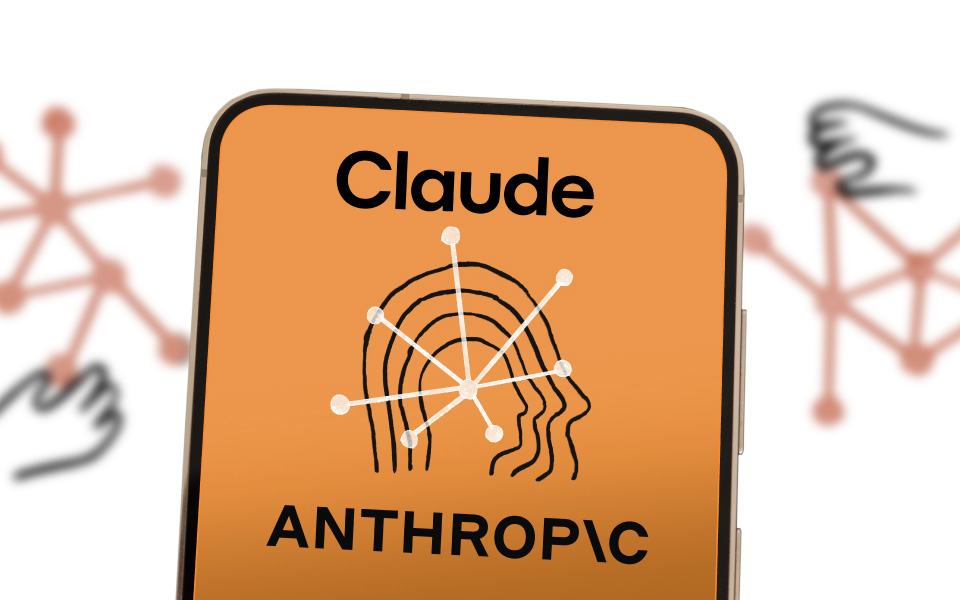
Claude’s computer-use capability is groundbreaking, but it's not without its growing pains. Early users have highlighted several limitations that need to be addressed before the technology can be fully embraced:
-
Performance Limitations: The AI’s execution is still relatively slow compared to human capabilities. Tasks that a human could complete in seconds may take Claude longer, with potential errors, such as misclicks or failing to interpret dynamic elements like pop-ups or notifications. In an OSWorld evaluation, Claude scored 14.9%, a promising step up from the 7.7% achieved by the next-best AI model, though still far from the 70-75% human-level proficiency.
-
Pixel-Level Accuracy: Claude’s ability to interpret and act on what it sees is based on screenshots, meaning it doesn’t perceive the screen in real-time as a human would. This approach, also called its “flipbook” nature, limits its effectiveness in fast-paced tasks where small, fleeting actions or notifications might be missed.
-
Limited Interaction Types: Currently, Claude can move a cursor, click, and type. However, more complex actions such as dragging, zooming, or interacting with intricate user interfaces remain outside its current capabilities.
-
Security Limitations: From a security perspective, a key concern is prompt injection—a type of cyberattack where malicious instructions are embedded in content that the AI model interprets, potentially causing it to override its initial programming or take unintended actions. Given that Claude can interpret screenshots from internet-connected computers, there’s a risk it could encounter content designed to exploit prompt injection vulnerabilities.
Despite these limitations, the potential for improvement is vast. As Claude matures, researchers anticipate that the technology will become faster, more reliable, and capable of handling increasingly complex tasks with minimal human intervention.
Traditional RPA vs. Agentic Automation vs. Computer Use: What Does This Mean for Businesses?
While traditional RPA services has been a valuable for automating repetitive and rules-based tasks, advancements like agentic automation and AI-powered computer use are prompting businesses to assess their current processes and determine if they’re ready to leverage these new capabilities. These technologies offer the ability to handle more sophisticated tasks that require dynamic decision-making, problem-solving, and adaptation to changing conditions.
Key Differences Between Traditional RPA, Agentic Automation, and Computer Use
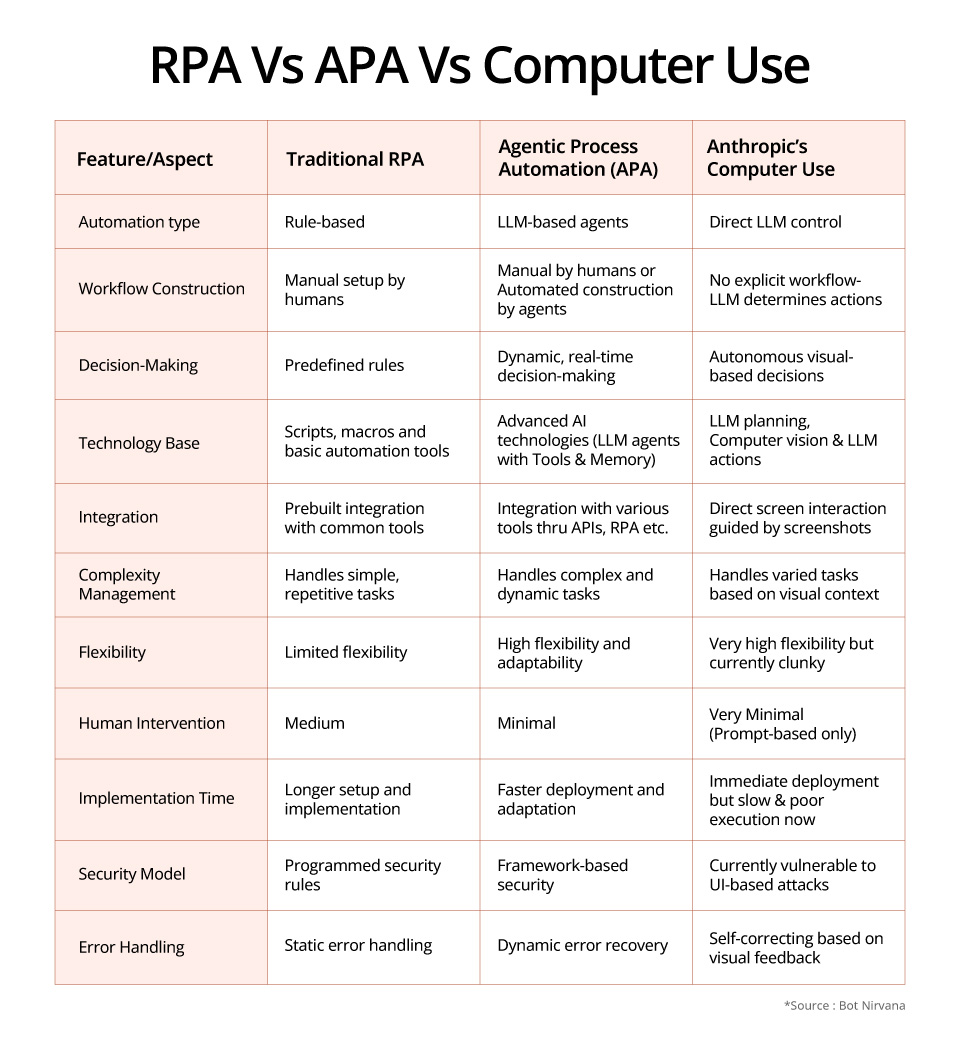
-
RPA (Robotic Process Automation): Traditional RPA excels at automating rule-based, repetitive tasks such as data entry, processing invoices, or generating reports. It operates within a set of predefined rules and is best suited for tasks that do not require real-time decision-making.
-
Agentic Automation: This represents a higher level of AI-driven automation, where agents can act autonomously, perceive their environment, and make decisions based on data analysis. These agents can handle more complex workflows that involve unstructured data, dynamic decisions, and real-time action.
-
Computer Use: Computer use enables AI to interact with software applications in the same way humans do, by moving cursors, clicking buttons, and inputting data across various platforms. It opens up new possibilities for automating tasks that require a combination of cognitive skills and software manipulation, such as navigating complex user interfaces or multi-step workflows.
Preparing for the Future: Key Questions for Businesses
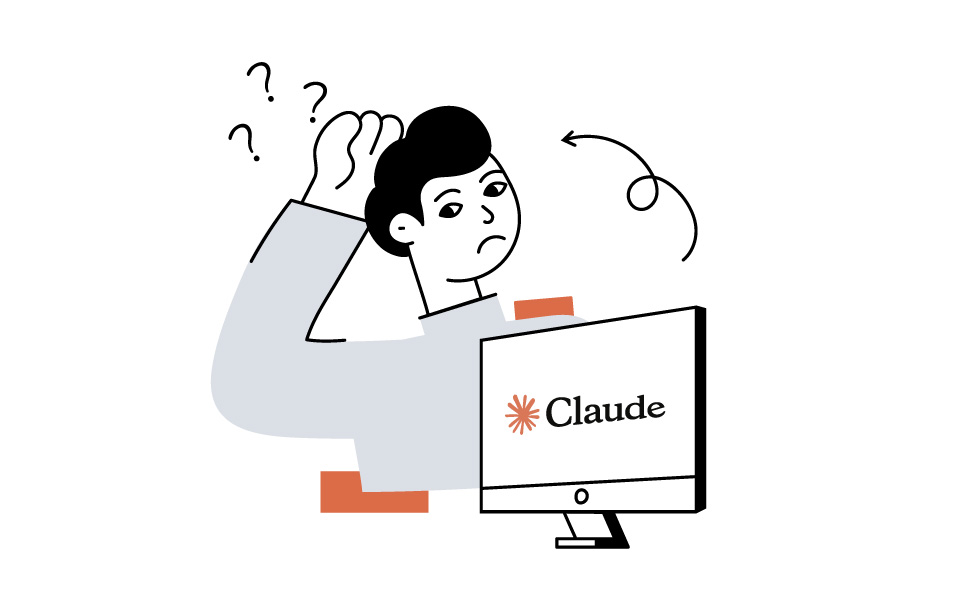
To fully leverage the potential of computer use, businesses will first need to transition toward agentic automation. By establishing agentic automation, businesses can create a foundation of intelligent workflows that are capable of handling complexity and adjusting to real-time conditions. This groundwork enables computer use to seamlessly integrate into existing operations, maximizing its impact and allowing AI to take on increasingly complex, cross-platform tasks.
As businesses contemplate integrating these advanced technologies, they should ask themselves several key questions:
-
Does this technology align with our long-term strategic goals?
-
What infrastructure changes are needed to adopt agentic RPA or AI-driven computer use?
-
Can existing systems integrate with these new technologies, or will new platforms or systems be required?
While automation may reduce the need for manual tasks, it will also require upskilling and reskilling efforts to ensure workers can effectively collaborate with AI tools and focus on higher-level tasks.
With the increased autonomy of AI, businesses must address risks related to data security, misuse of technology, and ensuring that automation does not replace human judgment in critical areas.
Overcoming Challenges: Integration and Ethical Considerations
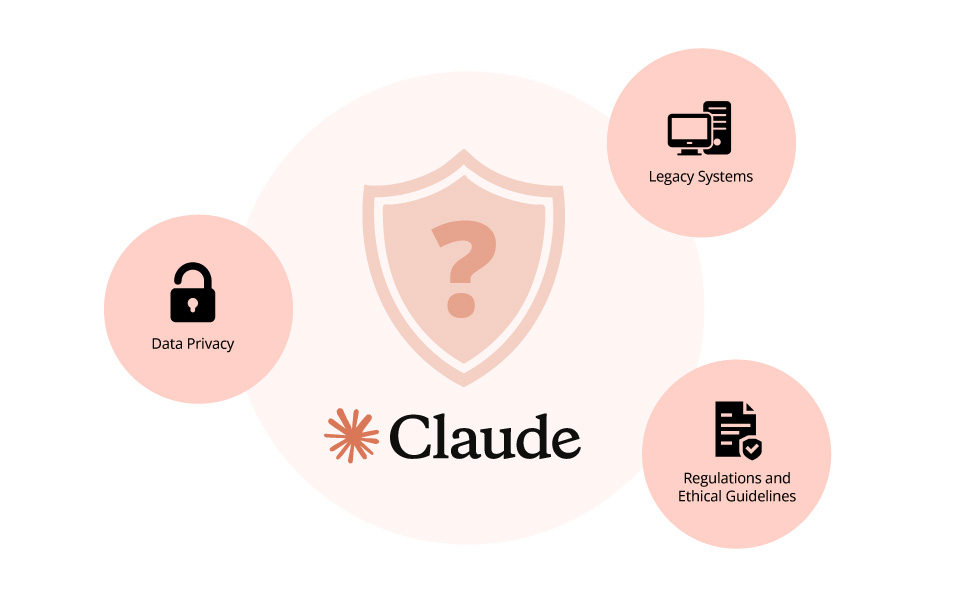
While the advantages of agentic automation and computer use are clear, several challenges must be addressed:
-
Regulations and Ethical Guidelines: Businesses must also consider the ethical implications of AI-driven automation. Ensuring that automation respects regulatory frameworks, particularly in industries like healthcare, finance, and government, is crucial to the responsible deployment of these technologies.
Wrapping Up: A New Era of Automation
The evolution from traditional RPA to agentic automation and AI-powered computer use is a critical turning point for businesses. As Claude’s capabilities evolve, AI will be able to handle increasingly sophisticated tasks, reducing the need for human intervention in complex workflows. But businesses must first prepare for this shift by evaluating their infrastructure, workforce needs, and potential risks.
While we’re still in the early days of these technologies, the potential for AI agents to perform real-world tasks autonomously is clear. The integration of computer use will make these agents even more powerful, offering organizations the ability to automate workflows that were once too complex or unpredictable for traditional automation.
Key Takeaways:




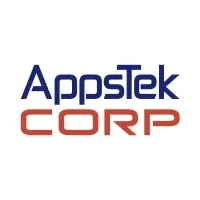












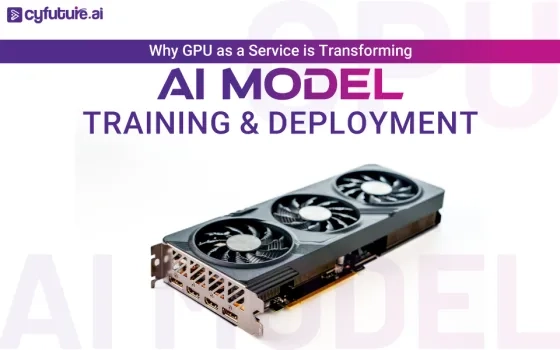
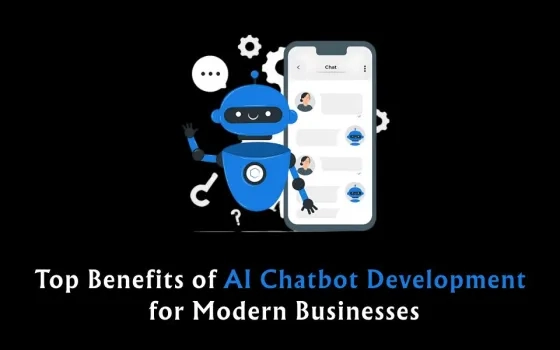



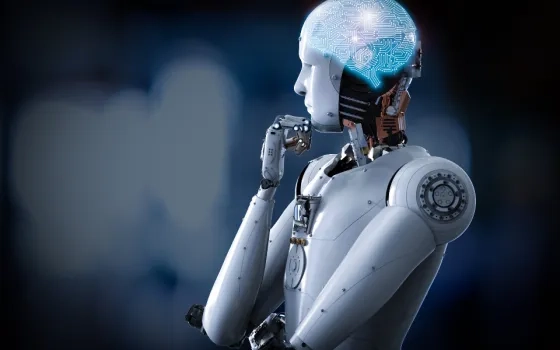

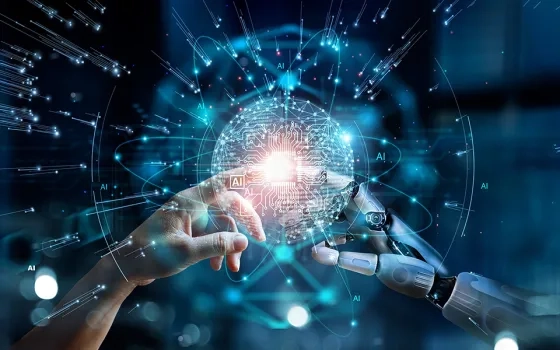


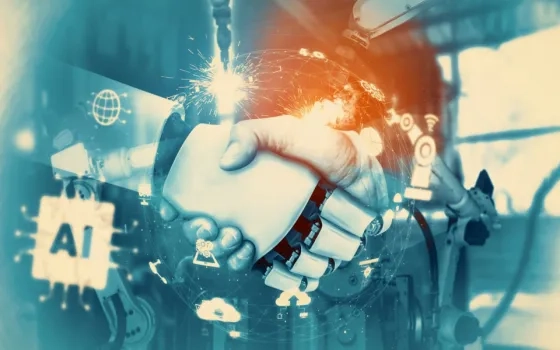

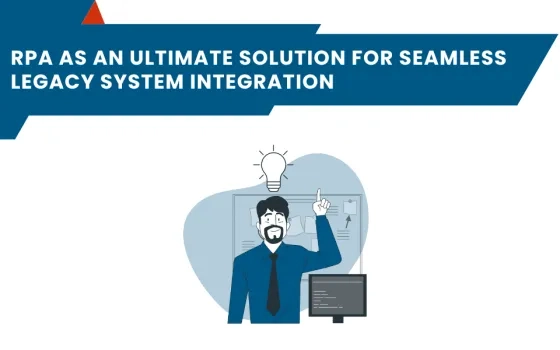
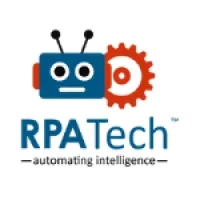






Comment
Claude's integration into RPA signals a profound shift toward agentic automation. By enabling systems to handle complex decision-making and tasks autonomously, it enhances operational efficiency. However, this leap also raises concerns around ethics, oversight, and the future of human roles in automation. This evolving landscape is one to watch closely.